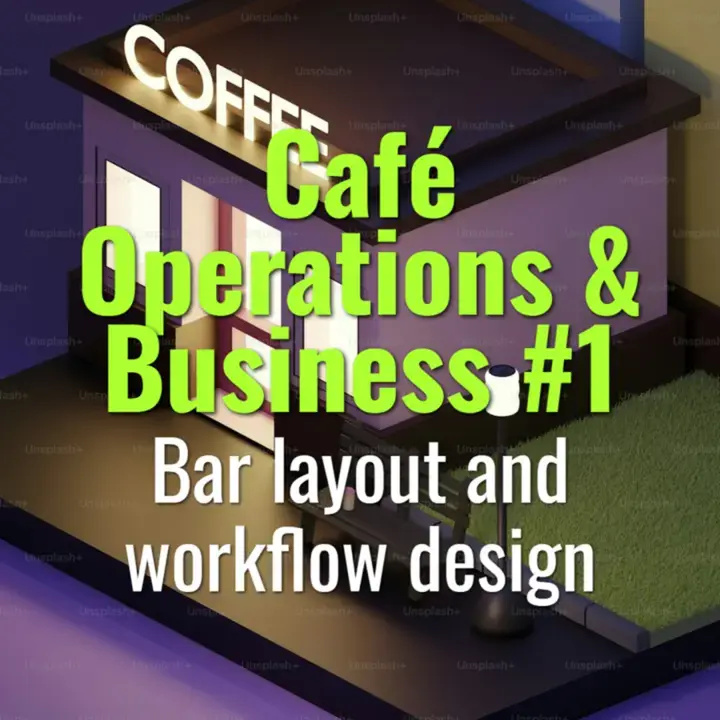Bar layout and workflow design
How to design a café bar layout that maximizes efficiency, ergonomics, and customer experience while supporting barista workflow.
- Coffee Basics Nerds
- 2 min read
Article 1 of 12 in Café Operations & Business/

Importance of Bar Layout
- A well-designed bar ensures smooth workflow, reducing wait times and stress.
- Poor layouts lead to barista fatigue, inefficiency, and inconsistent service.
- Layout should balance efficiency, ergonomics, and aesthetics.
Core Principles of Workflow Design
- Minimize Movement: Equipment and tools should be within easy reach.
- Logical Flow: Arrange stations in order of tasks (grinding → brewing → serving).
- Clear Separation: Distinguish hot beverage prep from cold drinks and food service.
- Customer Interaction: Design for eye contact and engagement at POS and service points.
Key Zones in a Café Bar
- Espresso Station: Machine, grinders, tamping/distribution tools, scales. Ideally in a tight triangle.
- Brew Bar: Pour-over, batch brewer, kettles, scales. Placed for visibility if used for customer engagement.
- Milk & Steam Zone: Pitchers, refrigerator, steam wands, cleaning tools.
- POS & Service Counter: Payment system, pickup point, display for pastries or merchandise.
- Back Bar/Support Area: Dishwashing, storage, backup supplies.
Ergonomic Considerations
- Counter height suitable for repetitive barista motions (~90 cm standard).
- Anti-fatigue mats reduce strain during long shifts.
- Line of sight for baristas to communicate with customers.
Workflow Optimization Tips
- Place grinders next to espresso machine, minimizing puck prep travel.
- Use undercounter refrigeration for milk to reduce reaching.
- Store spoons, pitchers, and cleaning cloths at designated, consistent spots.
- Ensure adequate space for two baristas to work side-by-side without collision.
Aesthetic & Customer Experience
- Open brew bars enhance transparency and storytelling.
- Lighting and bar finishes contribute to brand identity.
- Noise management (grinders, blenders) affects ambiance.
Summary
An effective bar layout aligns task order, ergonomics, and customer interaction. By minimizing movement, separating zones, and ensuring aesthetic appeal, cafés can improve efficiency, barista well-being, and customer satisfaction.